For centuries the English archer has been seen as the hero of the battle of Agincourt. Armed with his trusty longbow, this death-defying warrior has become the stuff of historical legend, and rightly so; without his willingness to engage in the furious melee once the lines had clashed it is likely that Agincourt would not have been the shocking victory that the English celebrate today. Indeed, defeat at Agincourt may have spelled doom for the Lancastrian regime and brought the Hundred Years’ War to a premature end. However, it is important to remember that the English army was not comprised solely of archers; out of a six thousand strong army, approximately nine hundred of these men were armoured men at arms, the armoured military elite of the day, which included both knights and professional armoured soldiers. If not for this steely backbone of Henry V’s `band of brothers` then the English army surely would have crumbled upon impact. Despite the withering arrow storm unleashed by the English archers, when the French nobility finally made their way through the muddy fields of Agincourt they hit the English front lines with such force that they were knocked back several feet. Key to the eventual success of the English knights and men at arms in holding the line as the archers continued to pour arrows in to the French flanks before charging in themselves was a surprisingly intricate and complex series of systems of martial arts, a system that Henry V had so much faith in that he himself was on the front lines. Studied and practiced by men and women across the world today under the acronym HEMA (Historical European Martial Arts), historians are finally beginning to acquire some idea as to how men fought and died in the Middle Ages. These systems of hand-to-hand combat evolved and developed constantly throughout the history of medieval Europe, an evolution of whose primary cause was the continuing improvements of armour throughout the fourteenth and fifteenth centuries (more on that later!).
The main source for the study of Historical European Martial Arts are a series of fencing manuals, commonly known as fechtbücher (which literally translates as `fight books` from German). These manuscripts are often filled with gorgeous images which must be used in conjunction with the text in order to unlock their secrets; Mark Rector has labelled them as being ‘intentionally arcane’ through design, as the medieval fencing masters sought to restrict understanding of their work from those who had not studied with the author. So what can we learn about combat at the battle of Agincourt through the study of these fascinating manuals? The first thing to note is that, contrary to the perception of medieval combat proffered up by Hollywood in films such as Braveheart, Ironclad, and A Knight’s Tale (as entertaining as that last one is), knightly combatants were not infact engaged in a contest decided entirely by strength, swinging their weapons back to gain more power, instead making measured, deliberate, and precise strikes designed in order to kill or maim as efficiently as possible. Nor were men in armour as slow as one may believe by watching these cinematic ventures in to the past; the biography of the French marshal Boucicuat who was present at the battle, describes how he was able to vault several obstacles and climb the underside of a ladder using only his arms whilst wearing a full suit of armour. Modern research has shown that similar feats are indeed possible whilst clad in armour, as seen in the accompanying video.
Through study of the fechtbücher we can also learn that knowing how to use your weapon was not always the most important factor in deciding who was left standing after the melee. Several fifteenth century fencing masters, such as Fiore dei Liberi and Hans Talhoffer, dedicate a generous amount of space in their books to the art of wrestling. On a medieval battlefield such as Agincourt a soldier might not always have the space to use his weapon to maximum efficiency; one report from the battle of Arsuf in the late twelfth century records how men were stood so close to one another that if someone had thrown an apple in to their ranks it would not have had the space to reach the ground. As such there is the possibility that a medieval battle, rare as they were, had the potential to become a pushing match until one side or another broke ranks. When one considers that the choice du jour for the armoured warrior in the fifteenth century was the lengthy pollaxe, then it becomes even less likely that a knight or man at arms would be able to use it as it is depicted in several sources, and grappling with the foe would take on even added importance (although as seen in image 2 the pollaxe’s used by Fiore dei Liberi are rather short, leaving this argument open to question).
This becomes even more significant when you begin to consider the impact of armour on how combats were fought during this period. By the early fifteenth century it was not uncommon for knights and other men at arms to be clad in what was known as ‘white harness’, a full suit of plate armour that covered the majority of the body. With the correct padding underneath a man was almost impervious to most cutting attacks from bladed weapons, and although it could be harmed by a well-placed blow from a bludgeoning weapon such as a pollaxe or a mace, most of the armour was well designed in order to deal with thrusting attacks, too. However, there were a few weak points in the armour that an opponent could exploit. The first of these was the visor of the helmet. Although modern recreations often have straps to keep the visor firmly in place and ensure the safety of modern reenactors, these were not necessarily part of the originals, a fact exploited by Fiore dei Liberi when he suggests that;
“When I see that my thrust cannot enter into his chest nor into his face (because of his visor), I lift the visor up and then I thrust the point in to his face. And if this does not satisfy me, I turn to plays of greater strength.”
Similarly, an anonymous fifteenth century manuscript known as Le Jeu de la Hache (the play of the axe) which details with how to fight with the pollaxe, strongly favours a thrust to the face as a way to injure one’s opponent. In addition to this, a carefully aimed thrusting attack in to the armpit was surely one way to end a fight sooner rather than later. In the work of Hans Talhoffer there are multiple instances when he suggests that a fighter targets the opponent’s armpit, or at least the armour around it. The armpit was often protected only by mail as opposed to plate during this period, and as such made for a tempting target indeed, and surely one that the armoured fighters at Agincourt would be trying to aim for once the lines clashed. A third weakpoint in an early fifteenth century suit of armour such as those worn at Agincourt was the area behind the knees. If we return to Le Jeu de la Hache, our anonymous author encourages us to use the pollaxe as a hook, latching on behind the knee in order to pull an opponent off balance and to the floor, where he would become easy pickings;
“Then give a great blow at the knee and well forward, so that if he takes a step the axe between his legs finds the other knee. And if he does not move you must give a great sudden pull toward you, so that your bec de faucon hooks itself behind his knee to pull him to the ground.”
By wrestling and grappling with one’s opponent, it would become possible to gain control of these areas and in turn, guarantee a short but bloody end to the fight. Returning to the works of Fiore dei Liberi, this is emphasised when he states;
“In the lower bind, a strong lock, have I enclosed you in such a way that you cannot escape and your strength will be worth nothing. I can make you suffer or I can give you death; I could even pen a letter and you wouldn’t be able to see me. You have no sword nor headgear, you have little honour, and you will have little solace.”
Not all instructors encouraged wrestling and grappling in a similar way though. Several times in the works of Talhoffer the wrestlers end up fighting on the ground, whilst Fiore dei Liberi emphasises the importance of being stood upright. It is hard not to agree with the proposal that when it comes to fighting on the field of battle, Fiore’s system is superior to that of Talhoffer (when one considers how many French knights were probably trampled to death and or suffocated in the mud this becomes even more important!). At this point, however, I feel compelled to say that these sources must be considered in context. The combats shown in the fechtbücher only truly demonstrate combat between two individuals, where all one has to worry about is the sharp bit of steel being held by the man in front of you. On the battlefield a knight would have been occupied by several potential threats, and this may have adjusted how he fought. Furthermore, as mentioned above, in the press of battle he may not have had the space to use his weapon as intended by the medieval fightmasters. Unfortunately, this is something that still requires a lot of research, and due to the necessity of needing a large group of people all in the same place at the same time wearing armour and fighting in a historically accurate sense, it is perhaps not a question that will be answered soon. It is also perhaps worth mentioning that for this period of history we have no proof for the existence of fechtbücher being produced in England, but this is not to say that similar techniques were not practised by English men at arms at the battle of Agincourt; there are records for English fencing schools being in use from the twelfth century onwards, and it seems reasonable to assume that similar techniques were being taught throughout Europe, although different fencing masters and masters of arms would clearly emphasise different aspects of combat to their pupils.
Although this article has covered some interesting facets of combat in and around the time of the battle of Agincourt, I feel it is necessary to say that there is still a lot that historians do not and cannot understand on the topic. For a start, although we can study medieval combat techniques to perfection, we will never know how it feels to use them on the medieval battlefield. We will (hopefully!) never be involved in a life or death situation where we are required to use medieval weapons in order to defend ourselves. As such, it does not matter how much we practice with these weapons as we will arguably lack the killer instinct required to be a successful combatants on the battlefields of the Middle Ages. In other cases there is currently a lack of published research on certain aspects of medieval combat, where we have barely scratched the surface; the use of the pollaxe springs to mind, with most historians preferring to focus on that most iconic of medieval weapons, the sword.
Ultimately, although most of the work at Agincourt seems to have been done by the archers, credit must be given to the English men at arms, whom, despite the gruelling march from Harfleur to Agincourt, were still capable of carrying out the complex and physically demanding techniques required to be successful on the medieval field of battle. This article, however, has barely scratched the surface when it comes to the intricacies of combat in the Middle Ages, and for those of who you are interested in learning more there is a wealth of online information to explore at will.
Suggested Reading
Fiore dei Liberi, MS. Ludwig XV 13, Fior di Battaglia, 1400-1410, Italy, leaf and ink on parchment, 27.9cm x 20.6cm, The J. Paul Getty Museum, available at http://www.fioredeiliberi.org/fiore/translation-images-getty.pdf
Hans Talhoffer, Fechtbuch,MS. Thott 290 2°, ink and watercolour on parchment, 1459, Germany, 30cm x 21cm, Det Kongelige Bibliothek, available at http://www.thearma.org/Fight-Earnestly.htm
Le Jeu de la Hache, trans. Anglo S., in Anglo S., `Le Jeu de la Hache: A Fifteenth-Century Treatise on the Technique of Chivalric Axe Combat`, Archaeologia Vol.109, (1991), pp.113-128
Anglo S., The Martial Arts of Renaissance Europe, (London, 2000)
Barker J., Agincourt: The King, the Campaign, the Battle, (London, 2010)
Mondschein K., The Knightly Art of Battle, (Los Angeles, 2011)
Waller J., `Combat Techniques`, in Blood Red Roses: The Archaeology of a Mass Grave from the Battle of Towton AD 1461, ed. Fiorato V., Boylston A., and Knüsel C., (Oxford, 2007), pp.148-54
Blog author Jacob Deacon is an MA History student at Cardiff University, where he also completed his undergraduate degree. He is currently researching the use and evolution of the pollaxe from the fourteenth to the sixteenth century, whilst his undergraduate dissertation was a study of single combat during the era of the Hundred Years’ War. Jacob recently delivered his first academic paper at Cardiff’s `Medieval Myths and British Identities` conference where he explored the links between mythologised accounts of combat both in medieval romances and historical chronicles of the fourteenth and fifteenth centuries. His research interests also include late medieval siege technology, which he plans to look at in depth sometime this year in regards to the works of Hans Talhoffer.
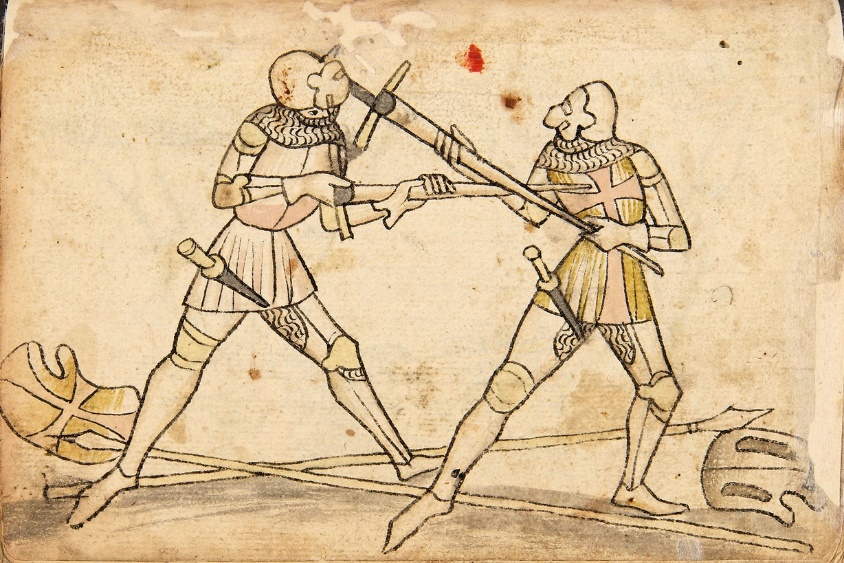
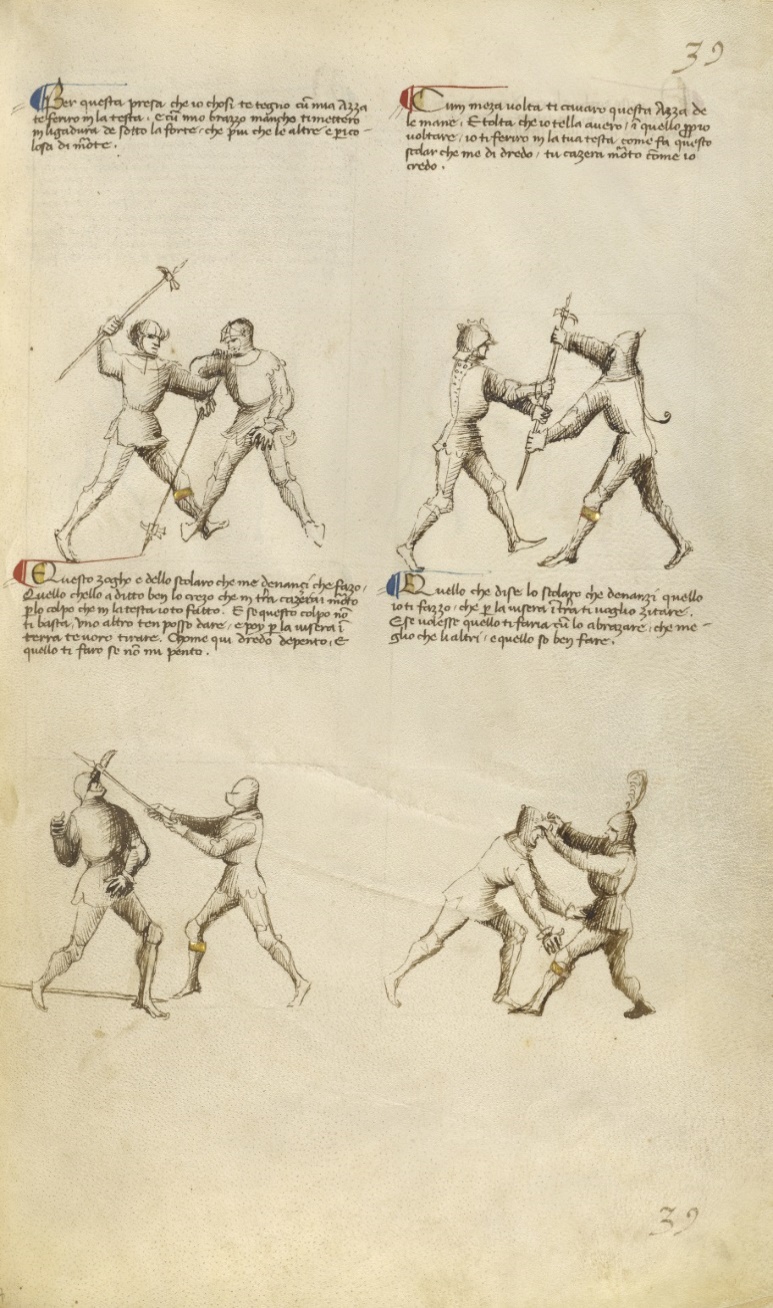
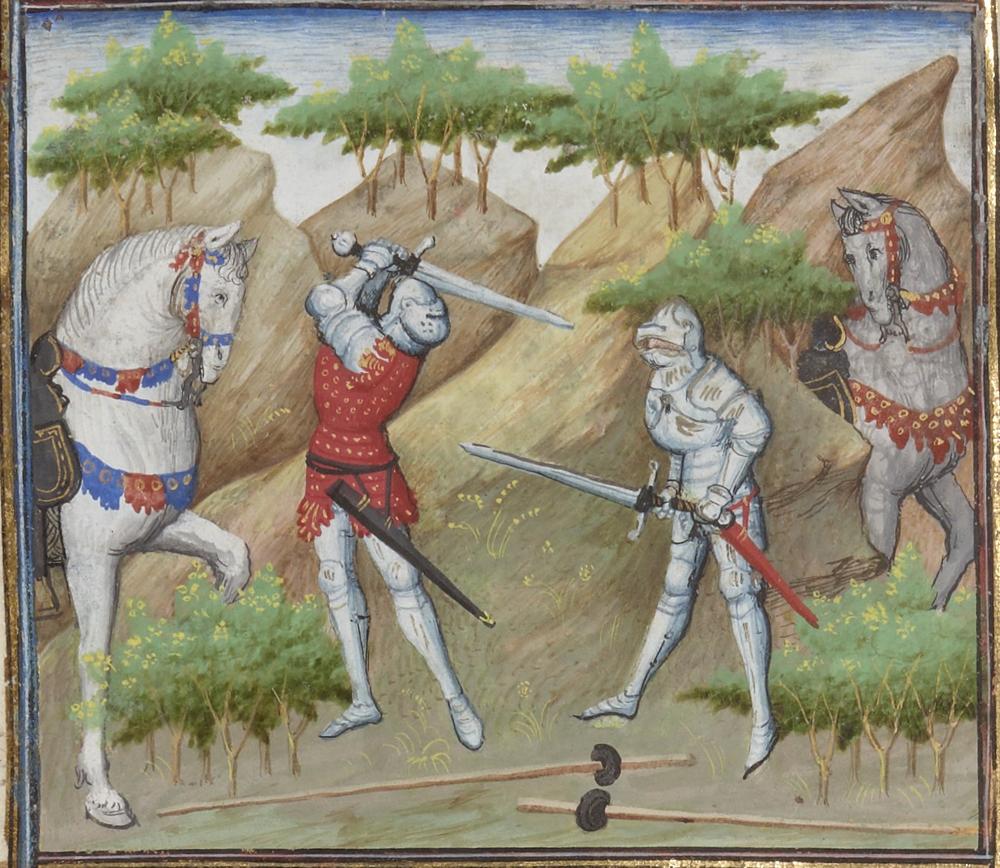
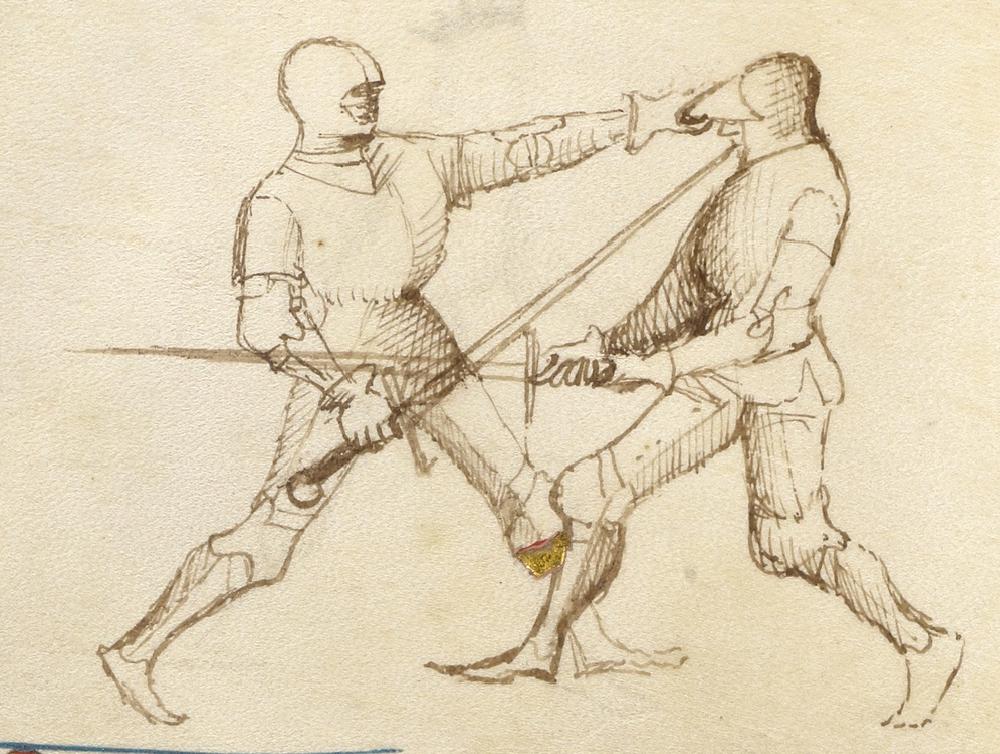
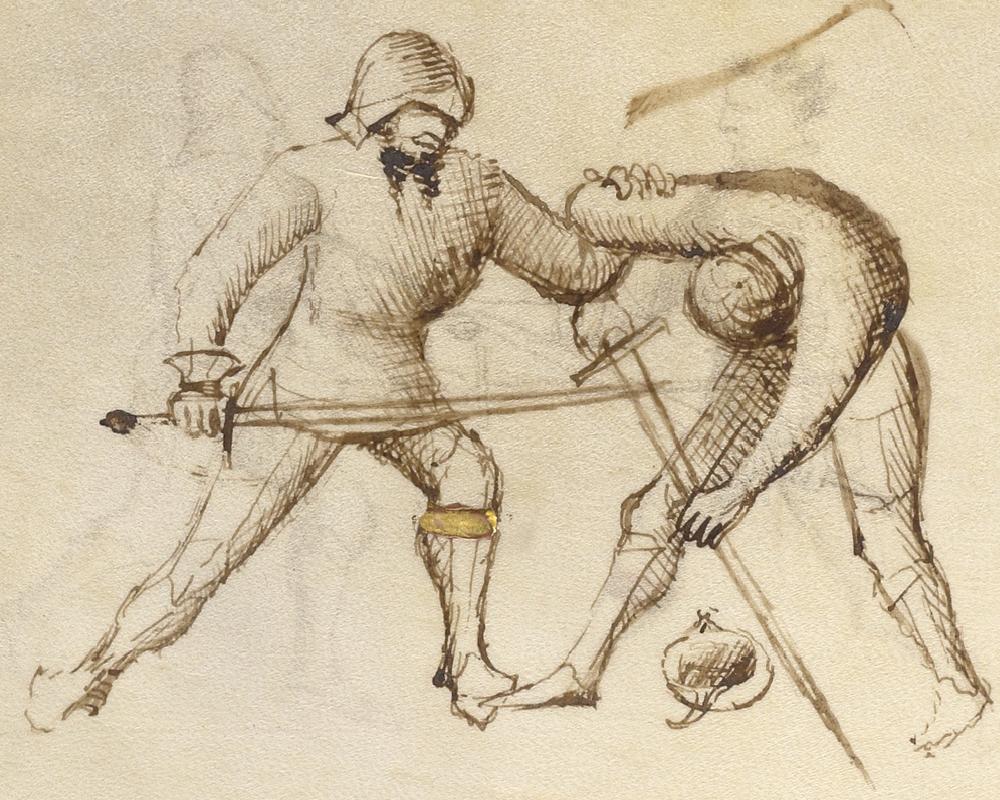
Recent Comments